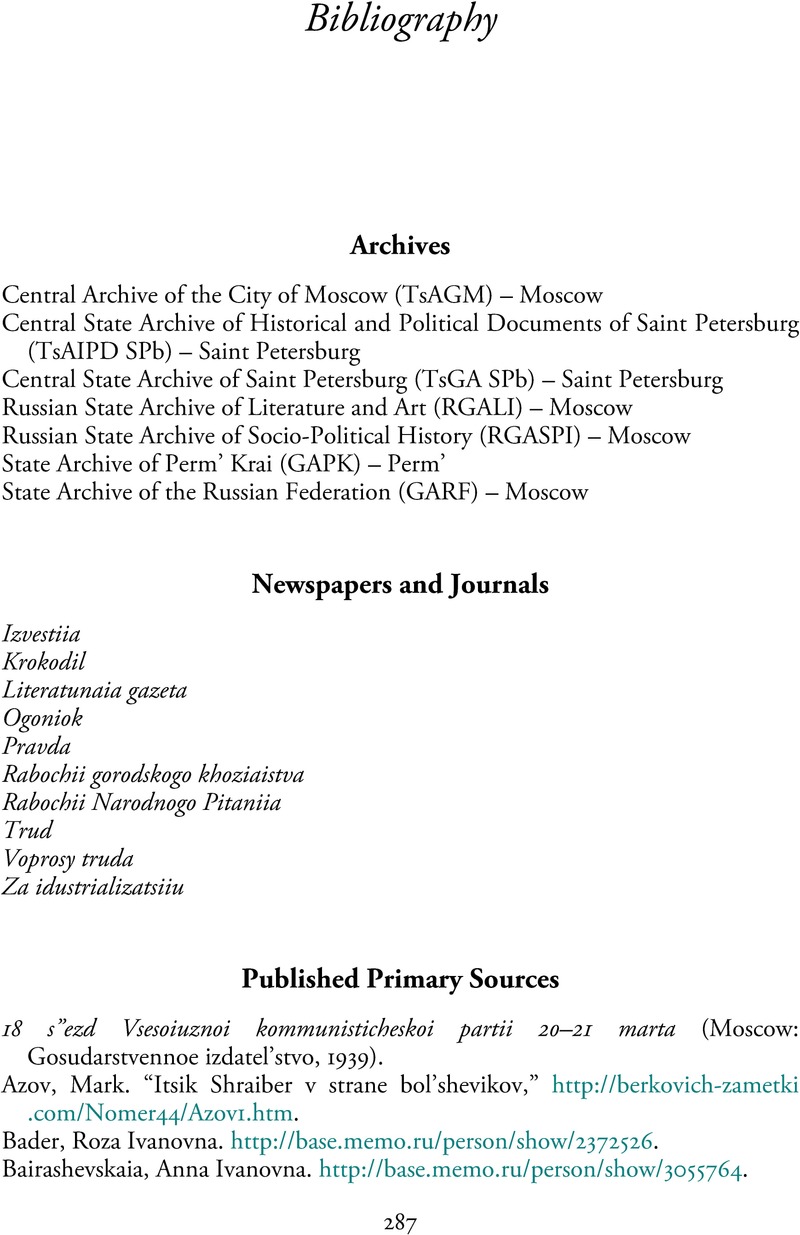Book contents
- Domestic Service in the Soviet Union
- New Studies in European History
- Domestic Service in the Soviet Union
- Copyright page
- Contents
- Figures
- Acknowledgments
- Introduction
- Prologue
- Part I Servants into Workers, 1920s
- Part II In the Land of Victorious Socialism, 1930s–1950s
- Conclusion
- Bibliography
- Index
- References
Bibliography
Published online by Cambridge University Press: 25 April 2024
- Domestic Service in the Soviet Union
- New Studies in European History
- Domestic Service in the Soviet Union
- Copyright page
- Contents
- Figures
- Acknowledgments
- Introduction
- Prologue
- Part I Servants into Workers, 1920s
- Part II In the Land of Victorious Socialism, 1930s–1950s
- Conclusion
- Bibliography
- Index
- References
Summary

- Type
- Chapter
- Information
- Domestic Service in the Soviet UnionWomen's Emancipation and the Gendered Hierarchy of Labor, pp. 287 - 304Publisher: Cambridge University PressPrint publication year: 2024

